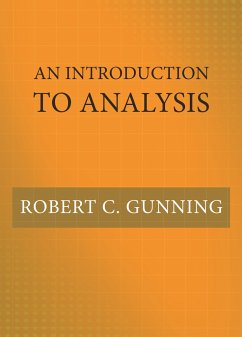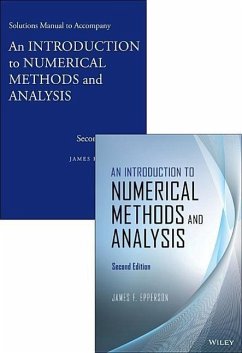
An Introduction to Nonlinear Analysis

PAYBACK Punkte
74 °P sammeln!
Short description/annotationA guide to solving non-linear problems, using simple exposition and easy proofs.Main descriptionThe techniques that can be used to solve non-linear problems are far different than those that are used to solve linear problems. Many courses in analysis and applied mathematics attack linear cases simply because they are easier to solve and do not require a large theoretical background in order to approach them. Professor Schechter's book is devoted to non-linear methods using the least background material possible and the simplest linear techniques. An understanding of...
Short description/annotation
A guide to solving non-linear problems, using simple exposition and easy proofs.
Main description
The techniques that can be used to solve non-linear problems are far different than those that are used to solve linear problems. Many courses in analysis and applied mathematics attack linear cases simply because they are easier to solve and do not require a large theoretical background in order to approach them. Professor Schechter's book is devoted to non-linear methods using the least background material possible and the simplest linear techniques. An understanding of the tools for solving non-linear problems is developed whilst demonstrating their application to problems in one dimension and then leading to higher dimensions. The reader is guided using simple exposition and proof, assuming a minimal set of pre-requisites. For completion, a set of appendices covering essential basics in functional analysis and metric spaces is included, making this ideal as an accompanying text on an upper-undergraduate or graduate course, or even for self-study.
Table of contents:
1. Extrema; 2. Critical points; 3. Boundary value problems; 4. Saddle points; 5. Calculus of variations; 6. Degree theory; 7. Conditional extrema; 8. Minimax methods; 9. Jumping nonlinearities; 10. Higher dimensions.
A guide to solving non-linear problems, using simple exposition and easy proofs.
Main description
The techniques that can be used to solve non-linear problems are far different than those that are used to solve linear problems. Many courses in analysis and applied mathematics attack linear cases simply because they are easier to solve and do not require a large theoretical background in order to approach them. Professor Schechter's book is devoted to non-linear methods using the least background material possible and the simplest linear techniques. An understanding of the tools for solving non-linear problems is developed whilst demonstrating their application to problems in one dimension and then leading to higher dimensions. The reader is guided using simple exposition and proof, assuming a minimal set of pre-requisites. For completion, a set of appendices covering essential basics in functional analysis and metric spaces is included, making this ideal as an accompanying text on an upper-undergraduate or graduate course, or even for self-study.
Table of contents:
1. Extrema; 2. Critical points; 3. Boundary value problems; 4. Saddle points; 5. Calculus of variations; 6. Degree theory; 7. Conditional extrema; 8. Minimax methods; 9. Jumping nonlinearities; 10. Higher dimensions.














